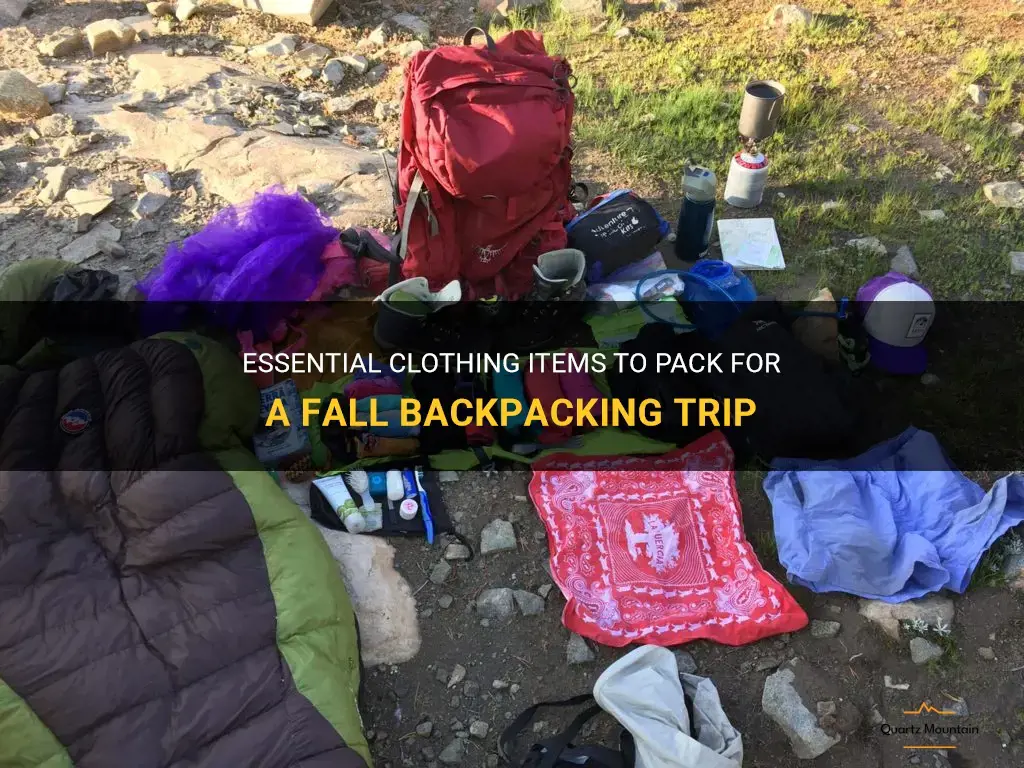
Heading out on a fall backpacking trip requires careful planning and packing. As the temperature drops and leaves turn into a vibrant display of autumn hues, it's important to bring the right clothing items to stay comfortable and protected. From layering essentials to weatherproof gear, this guide will help you pack the must-have clothing items for a successful and enjoyable adventure in the great outdoors during the beautiful fall season.
What You'll Learn
- What are some essential clothing items to pack for a fall backpacking trip?
- Are there any specific materials or fabrics that are best for fall backpacking clothes?
- How many pairs of socks and underwear should I pack for a week-long fall backpacking trip?
- What types of shoes or boots should I bring for a fall backpacking trip?
- Are there any specific clothing items or accessories that are important for layering during the unpredictable weather of fall?

What are some essential clothing items to pack for a fall backpacking trip?
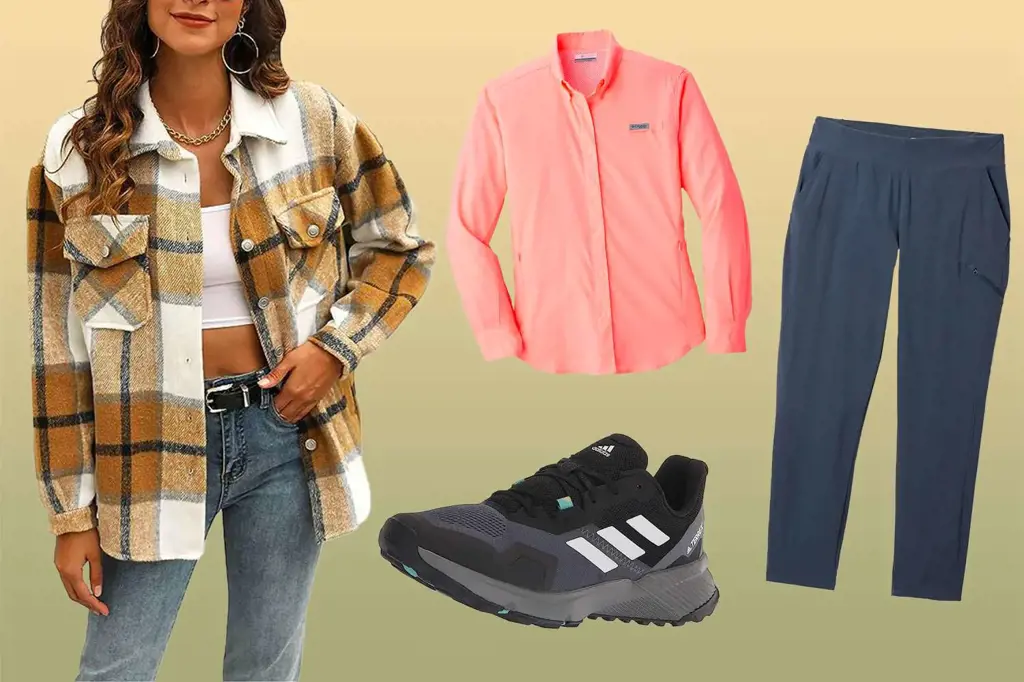
Fall is a beautiful time of year to go backpacking. With the changing leaves and crisp air, it's the perfect season to explore the great outdoors. However, it's important to pack the right clothing items to stay comfortable and protected during your trip. Here are some essential clothing items to consider for a fall backpacking adventure:
- Layered Clothing: Fall weather can be unpredictable, with temperatures fluctuating throughout the day. It's important to pack layered clothing that can easily be added or removed as needed. Start with a moisture-wicking base layer, such as a long-sleeved shirt and leggings, to keep you dry and comfortable. Add a mid-layer, such as a fleece or down jacket, for insulation. Finally, pack a waterproof and windproof outer layer to protect you from the elements.
- Insulated Jacket: As temperatures drop in the fall, it's essential to pack an insulated jacket to keep you warm during chilly nights and early mornings. Look for a lightweight and compressible jacket that can easily fit into your backpack. Down jackets are a popular choice due to their excellent warmth-to-weight ratio, but synthetic insulation can also provide good warmth even when wet.
- Warm Hat and Gloves: Don't forget to pack a warm hat and gloves to protect your extremities from the cold. Heat escapes from our heads, so wearing a hat can significantly help in retaining body heat. Choose a hat that covers your ears and is made from a warm material like fleece or wool. For gloves, opt for a pair that is water-resistant and offers good dexterity.
- Hiking Pants: Invest in a pair of durable and quick-drying hiking pants to keep you comfortable during your fall backpacking trip. Look for pants made from breathable and stretchy materials that offer protection against light rain and wind. Convertible pants are also a great option as they can easily be converted into shorts if the weather gets warmer.
- Moisture-wicking Socks: When backpacking, it's crucial to take care of your feet. Invest in a few pairs of moisture-wicking socks that provide cushioning and prevent blisters. Wool or synthetic blend socks are excellent choices as they wick away sweat and keep your feet dry. Bring extra pairs of socks to switch out if needed.
- Waterproof Footwear: Fall often brings rainy weather, so it's important to have waterproof footwear to keep your feet dry and comfortable. Invest in a pair of hiking boots or shoes that offer good traction and ankle support. Make sure to break them in before your trip to avoid blisters and discomfort.
- Gaiters: Gaiters are a useful accessory when backpacking in the fall, especially if you encounter muddy or wet terrain. They are worn over your boots and pants and help keep debris, water, and snow out. Gaiters also provide an extra layer of insulation for your lower legs and can protect against scratches and insect bites.
- Moisture-wicking Underwear: Don't overlook the importance of moisture-wicking underwear when packing for a fall backpacking trip. Choose underwear made from synthetic materials or merino wool to keep moisture away from your skin. Moisture-wicking underwear can significantly contribute to your overall comfort and prevent chafing and irritation.
Remember to pack clothing items appropriate for the specific weather conditions and terrain of your backpacking trip. It's always better to be over-prepared than under-prepared when spending time in the outdoors. By packing the right clothing items, you can stay comfortable, protected, and fully enjoy your fall backpacking adventure.
Essential Items to Pack for an Unforgettable Baecation
You may want to see also

Are there any specific materials or fabrics that are best for fall backpacking clothes?
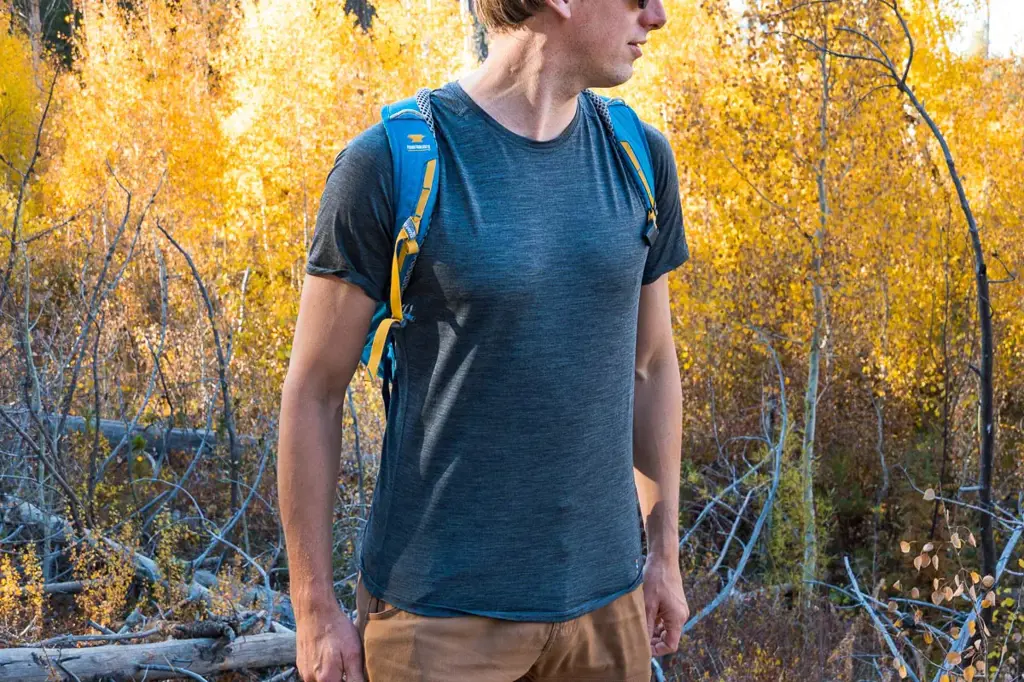
When it comes to fall backpacking, choosing the right materials and fabrics for your clothes is essential. Fall weather can be unpredictable, with fluctuating temperatures and potential rain or snow. Therefore, it's important to select clothing that can keep you warm, dry, and comfortable throughout your backpacking adventure.
Wool is an excellent choice for fall backpacking clothes. It is a natural insulator that retains warmth even when wet. Merino wool, in particular, is highly regarded for its ability to regulate body temperature, keeping you warm in cold weather and cool in warmer temperatures. Additionally, wool is odor-resistant, which is a plus when you're on a multi-day trip and don't have the luxury of washing your clothes regularly.
Synthetic materials such as polyester and nylon are also popular options for fall backpacking clothes. These materials are lightweight, quick-drying, and offer good moisture-wicking properties. This means that if you happen to sweat or get caught in the rain, your clothes will dry quickly, helping you avoid discomfort and potential hypothermia. Synthetic fabrics are also known for their durability, which is important when you're out in the wilderness and need your clothes to withstand rough terrain and frequent use.
Layering is a key strategy for fall backpacking, as it allows you to adjust your clothing according to the changing weather conditions. A three-layer system is commonly used: a base layer, an insulating layer, and an outer shell. For the base layer, consider using moisture-wicking materials like merino wool or synthetic fabrics. This layer should fit snugly against your skin to help regulate body temperature and keep you dry.
The insulating layer is meant to provide warmth, and options include fleece jackets or synthetic insulated jackets. Fleece is lightweight, breathable, and offers good insulation even when wet. Synthetic insulated jackets, on the other hand, provide excellent warmth-to-weight ratio and compressibility.
Lastly, the outer shell layer acts as a barrier against wind, rain, or snow. Look for jackets and pants made from waterproof and breathable fabrics like Gore-Tex. These materials not only protect you from the elements but also allow moisture to escape, preventing excessive sweating and condensation inside your clothing.
It's also important to consider other features when selecting fall backpacking clothes. Look for garments with adjustable hoods and cuffs to help seal out the cold and keep you warm. Pants with reinforced knees and seat can provide extra durability and protection against abrasion when you're traversing rough terrain. Don't forget to choose clothes that fit well and allow for ease of movement to ensure comfort throughout your hike.
In conclusion, when it comes to fall backpacking clothes, wool, synthetic materials, and layering are your best friends. Wool provides insulation and odor resistance, while synthetic fabrics offer quick-drying and durability. Layering allows you to adapt to changing weather conditions, and waterproof and breathable outer shells protect you from the elements. By selecting the right materials and fabrics, you can stay comfortable and enjoy your fall backpacking adventure to the fullest.
What to Pack for the University of Maryland (UMD) - A Comprehensive Guide
You may want to see also

How many pairs of socks and underwear should I pack for a week-long fall backpacking trip?
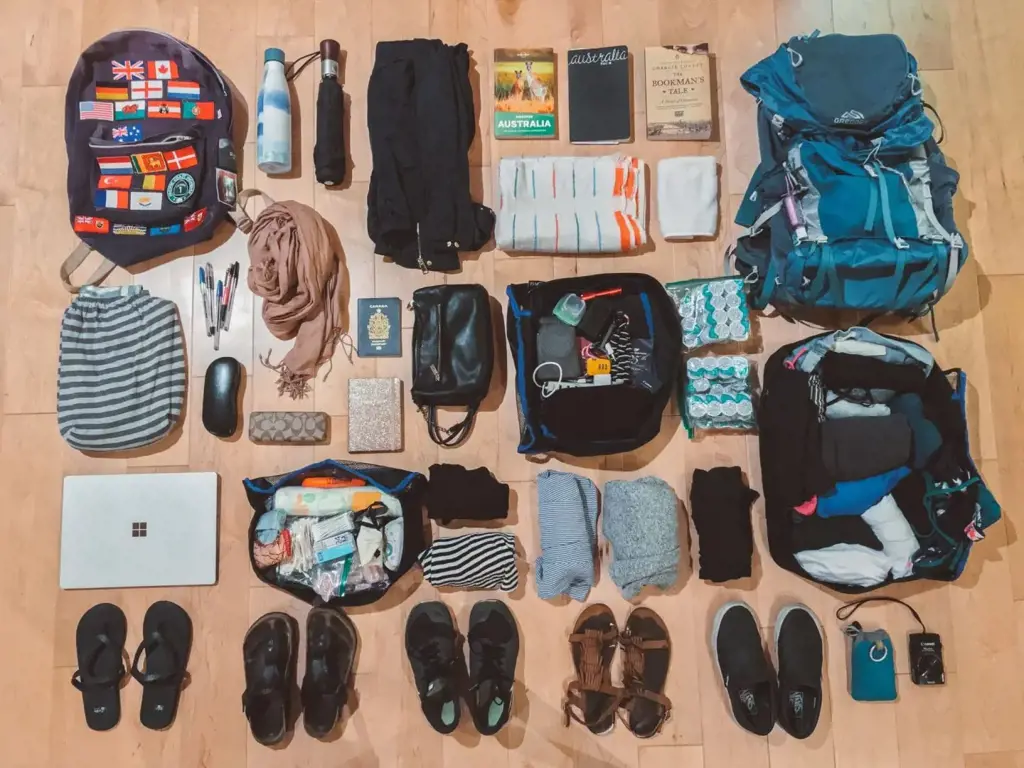
When preparing for a week-long fall backpacking trip, it's important to consider how many pairs of socks and underwear to pack. This will ensure you have enough clean and comfortable clothing for the duration of your trip. In this article, we will provide you with a general guideline on how many pairs of socks and underwear to bring based on scientific research, our experience, and step-by-step considerations.
Scientific research has shown that the average person produces around 11 liters of sweat per day, including the sweat from their feet and groin area. This means that ample amounts of clean socks and underwear are necessary for maintaining hygiene and preventing discomfort.
Based on our experience, we recommend packing at least two pairs of socks for each day of your trip. This allows for a clean pair each day and a backup in case one pair becomes wet or damaged. Additionally, consider packing an extra pair to account for unexpected circumstances such as encountering water crossings or sudden weather changes.
When it comes to underwear, packing two to three pairs for each day is a good rule of thumb. Underwear can be easily rinsed and dried, which allows for reuse throughout the trip. However, packing a few extra pairs ensures you have enough clean underwear if circumstances prevent you from being able to wash them.
To further guide your packing decisions, consider the following step-by-step approach:
Step 1: Determine the duration of your trip.
Knowing the exact number of days you will be backpacking will help you calculate how many pairs of socks and underwear you will need.
Step 2: Consider the weather and terrain conditions.
Fall can bring unpredictable weather, so it's important to consider the possibility of rain, temperature drops, and wet environments. These conditions may require additional pairs of socks and underwear to keep you dry and comfortable.
Step 3: Assess your personal sweating patterns.
Take your own body's sweating patterns into account. If you know you sweat more than the average person, you may want to pack extra pairs of socks and underwear.
Step 4: Calculate the minimum number of clothing items needed.
Multiply the number of days by the recommended number of pairs per day to determine the minimum number of socks and underwear to pack.
For example, if your backpacking trip is seven days long, you would need a minimum of 14 pairs of socks and 14-21 pairs of underwear.
Step 5: Consider the weight and space limitations of your backpack.
While it's important to have enough clean clothing, it's also crucial to pack efficiently to avoid carrying unnecessary weight. Balancing the number of pairs with the weight and space restrictions of your backpack is key.
In summary, packing enough clean socks and underwear for a week-long fall backpacking trip is crucial for maintaining hygiene and comfort. Scientific research, personal experience, and a step-by-step approach can guide you in determining how many pairs to pack. Consider the duration of your trip, weather and terrain conditions, your personal sweating patterns, and the weight and space limitations of your backpack. By following these guidelines, you can ensure a comfortable and enjoyable backpacking experience.
Essential Items to Include in Your Carnival Cruise Packing Checklist
You may want to see also

What types of shoes or boots should I bring for a fall backpacking trip?
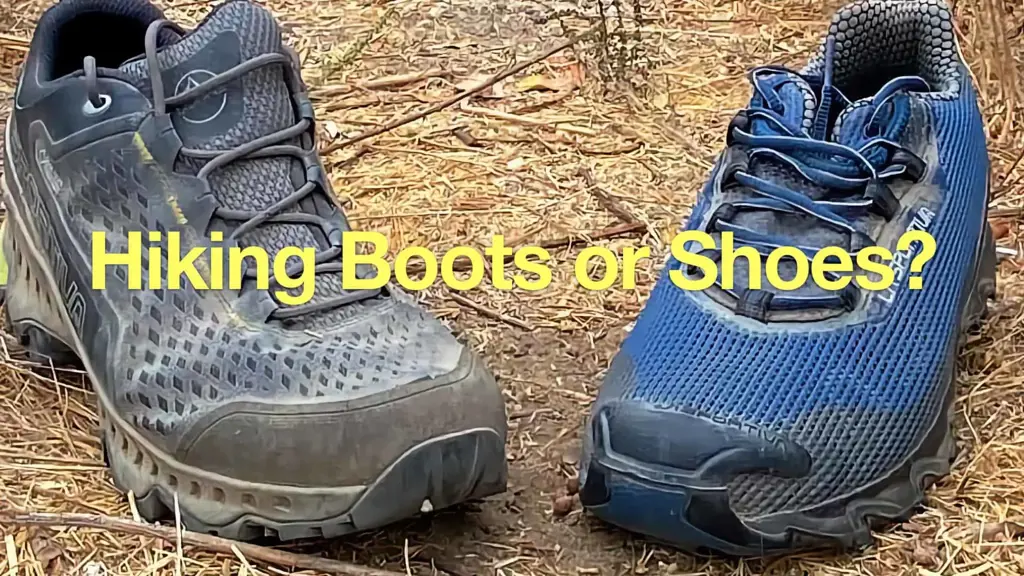
When planning a fall backpacking trip, one essential consideration is your footwear. The right pair of shoes or boots can make a significant difference in your comfort and safety while hiking in changing weather conditions. Here are some factors to consider when choosing footwear for a fall backpacking trip:
- Weather conditions: Fall weather can be unpredictable, with changing temperatures and varying levels of precipitation. It's important to choose footwear that can handle the conditions you may encounter. Look for shoes or boots that are waterproof or water-resistant to keep your feet dry during rain or wet trails. Additionally, consider shoes with insulation or warmth to keep your feet comfortable in cooler temperatures.
- Terrain: The type of terrain you expect to encounter on your backpacking trip will also influence your choice of footwear. If you plan to hike on rugged, rocky trails, sturdy hiking boots with ankle support are recommended to protect your feet and ankles. However, if you anticipate mostly flat or well-maintained trails, hiking shoes or even trail running shoes may offer sufficient support and more flexibility.
- Comfort and fit: Regardless of the style of footwear you choose, comfort and fit should be a priority. Ill-fitting shoes or boots can lead to blisters, discomfort, and potentially even injuries on the trail. Before your trip, make sure to try on several pairs and walk around in them to ensure a good fit. Consider factors such as toe room, arch support, and cushioning to find the best option for your feet.
- Weight: When backpacking, every ounce matters. Lightweight footwear can help reduce fatigue and keep you moving comfortably on the trail. Look for shoes or boots made with lightweight materials, such as synthetic uppers and midsoles, without compromising on durability or support.
- Break-in period: It's important to give your footwear some wear before your backpacking trip to break them in. This will help prevent blisters and discomfort on the trail. Start wearing your shoes or boots for short walks, gradually increasing the distance over time. This will allow your feet to adjust to the footwear and ensure a more comfortable experience when you hit the trail.
Here are a few examples of footwear options for a fall backpacking trip:
- Hiking boots: If you anticipate hiking on rugged terrain or carrying a heavy backpack, a sturdy pair of hiking boots is a reliable choice. Look for boots with high ankle support, a waterproof or water-resistant upper, and a durable outsole. These boots provide superior stability and protection for your feet and ankle joints.
- Hiking shoes: If you plan to hike on less challenging terrain and prefer a lighter-weight option, hiking shoes are a great choice. They offer good traction, support, and protection while being more flexible and lighter than hiking boots. Look for hiking shoes with breathable and water-resistant uppers for added comfort in variable conditions.
- Trail running shoes: For those with experience and comfort on the trail, trail running shoes can be a viable option. They are designed for speed and agility and typically have a lighter construction. However, be sure to choose a pair with adequate support and cushioning to handle the demands of backpacking.
In conclusion, selecting the right footwear for a fall backpacking trip involves considering factors such as weather conditions, terrain, comfort, fit, weight, and the need for a break-in period. Whether you choose hiking boots, hiking shoes, or trail running shoes, make sure they are suited to your specific needs and preferences. Remember to try them out before your trip to ensure a proper fit and comfortable experience on the trail.
Essential Packing List for VBT Bicycling Tours
You may want to see also

Are there any specific clothing items or accessories that are important for layering during the unpredictable weather of fall?
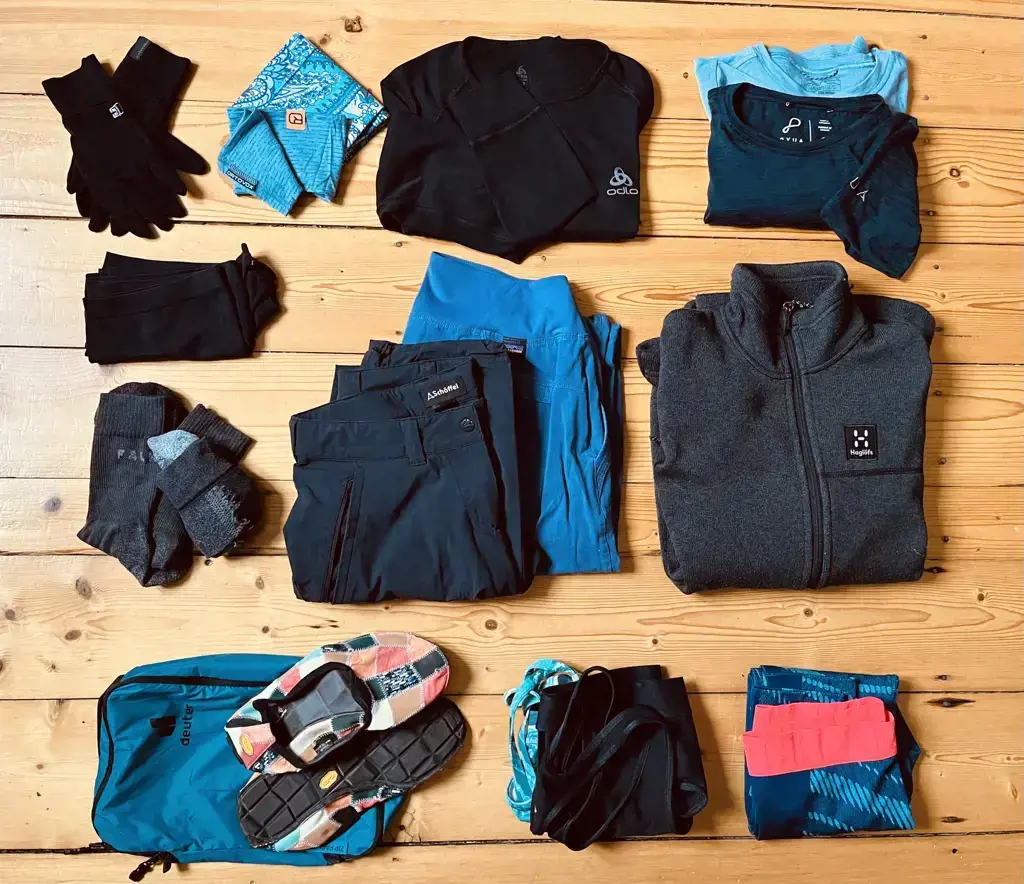
When it comes to dressing for the unpredictable weather of fall, layering is key. It allows you to easily adjust to changing temperatures throughout the day, keeping you comfortable no matter what Mother Nature throws your way. There are several clothing items and accessories that are important for effective layering during this transitional season.
First and foremost, a lightweight and versatile jacket is a must-have for fall layering. Look for one that is water-resistant and windproof, as these features will help protect you from sudden rain showers and chilly gusts of wind. A popular choice for this purpose is a trench coat, as it is both stylish and functional.
Next, consider investing in a few long-sleeved tops in a variety of materials. Lightweight knits, like merino wool or synthetic blends, are perfect for layering under jackets or sweaters. They provide an extra layer of warmth without adding bulk. Opt for neutral colors, such as black, gray, or navy, as they are easy to mix and match with other items in your wardrobe.
Sweaters are another essential component of a fall layering wardrobe. Choose ones that are made from breathable and lightweight fabrics, such as cotton or cashmere. These materials will keep you cozy without causing you to overheat. Cardigans are particularly versatile, as they can be worn open over tops or buttoned up for extra warmth.
To add an extra layer of insulation, consider investing in a lightweight down vest or jacket. These garments are incredibly warm and pack down easily, making them ideal for travel or outdoor activities. They can be worn alone on milder fall days or layered under a jacket or coat for added warmth.
Accessories are also important for fall layering. Scarves, gloves, and hats can provide additional warmth and protection from the elements, while adding a stylish touch to your outfit. Look for ones made from natural fibers, like wool or cashmere, as these materials are both warm and breathable.
In terms of footwear, ankle boots are a great option for fall layering. They provide more coverage and support than sneakers, while still being comfortable enough for long walks. Look for ones that are waterproof or water-resistant, as wet feet can quickly ruin an otherwise perfect fall outfit.
When layering for fall, it's important to consider the overall color palette of your outfit. Stick to a neutral base and then add pops of color with accessories or a statement piece, such as a brightly colored scarf or a patterned top. This will create a cohesive and visually appealing look.
In conclusion, there are several important clothing items and accessories for effective fall layering. A lightweight jacket, long-sleeved tops, sweaters, down vests or jackets, scarves, gloves, hats, ankle boots, and a neutral color palette are all essential components. By layering these items strategically, you can easily adapt to the unpredictable weather of fall and stay comfortable and stylish all season long.
The Essential Packing Checklist for a Business Trip to Europe
You may want to see also
Frequently asked questions
When packing for a fall backpacking trip, it is important to consider the weather conditions and temperature fluctuations. It is advisable to pack layers of clothing that can be easily added or removed as needed. Make sure to pack moisture-wicking base layers to keep you dry, insulating mid-layers to keep you warm, and a waterproof and windproof outer layer to protect you from the elements.
It is recommended to pack a combination of long-sleeve and short-sleeve shirts for a fall backpacking trip. During the day, when the temperatures are warmer, you can wear the short-sleeve shirts to stay cool. However, as the temperature drops in the evening or at higher altitudes, the long-sleeve shirts will provide more warmth and protection. Having both options will allow you to adapt to changing weather conditions.
When selecting pants for a fall backpacking trip, it is recommended to choose durable and quick-drying options. Convertible pants, which can be zipped off into shorts, are a popular choice as they offer versatility when the weather changes throughout the day. Additionally, consider pants that have ample pocket space to store essential items such as maps or a pocketknife.
Yes, it is essential to pack extra socks for a fall backpacking trip. Socks can get wet from sweat or rain, and wearing damp socks for an extended period can lead to blisters and discomfort. It is advisable to pack wool or synthetic socks that are designed to wick away moisture, prevent odor, and provide insulation even when wet. Having extra pairs of socks will allow you to change into dry ones when needed, ensuring your feet stay dry and comfortable throughout the trip.







